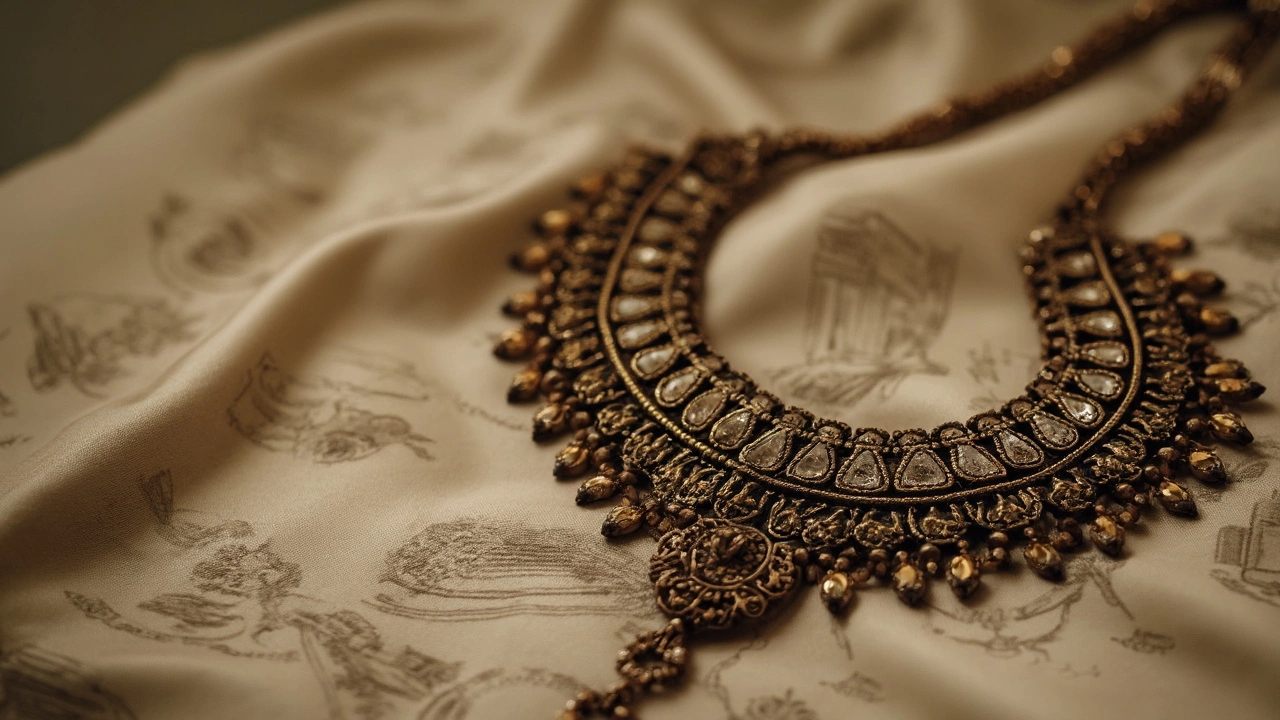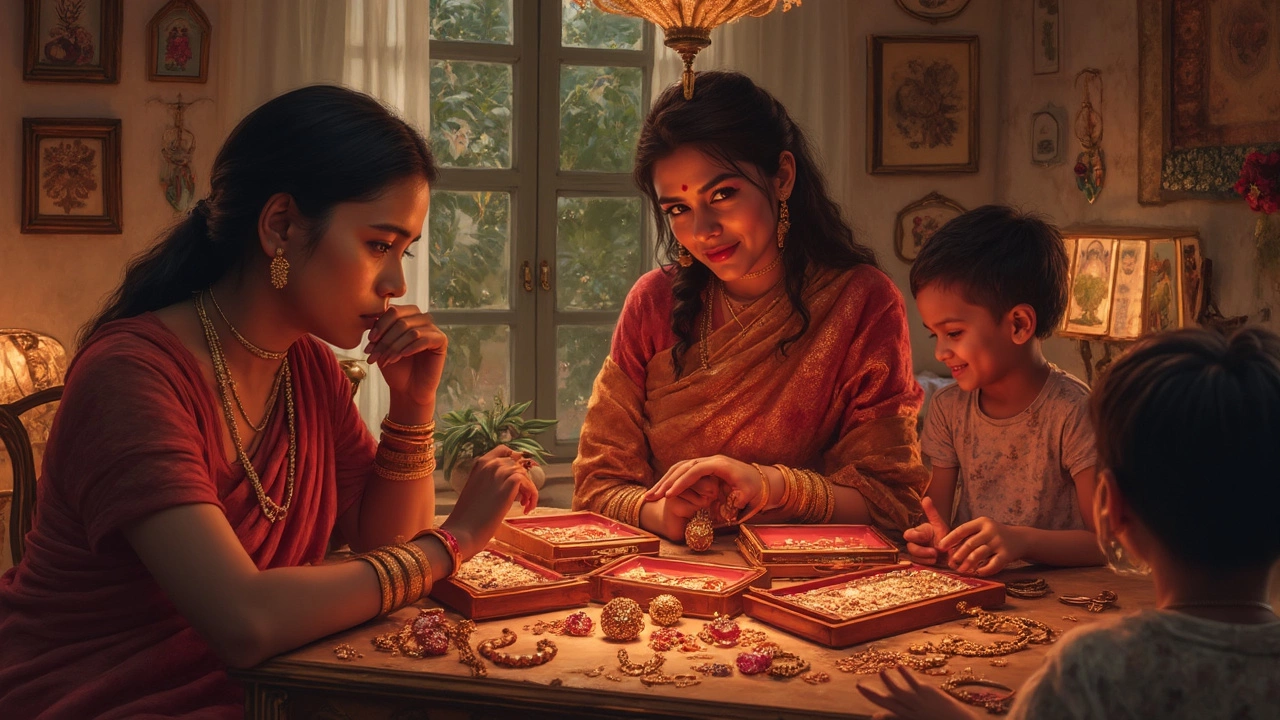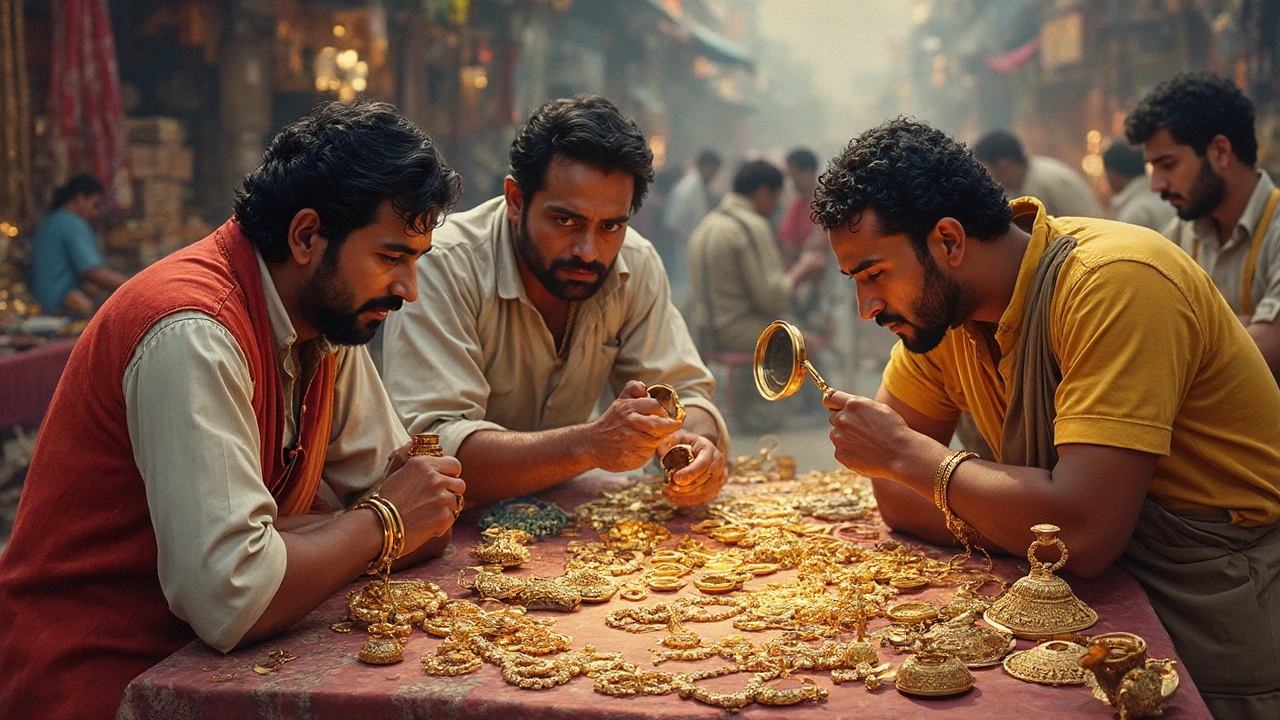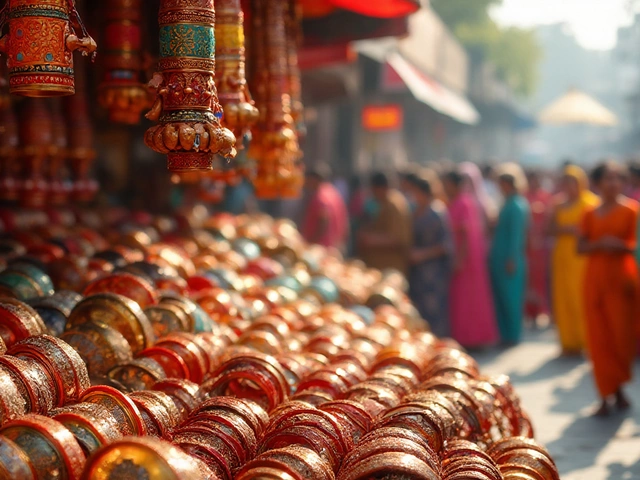Ever held a piece of jewelry and wondered, 'How old is this thing, really?' Figuring out the age of your jewelry can feel like solving a mystery. Whether you stumbled upon an antique necklace in a vintage market or inherited a brooch from your grandmother, finding out when it was made can add a layer of excitement and value.
A good starting point is to look for hallmarks or maker's marks—tiny imprints often tucked away on the back of a piece. These marks can reveal not just the age but also where it was made and who crafted it. And believe me, deciphering these signs can be like learning a new language but totally worth it for the insights they offer.
Next, take a stroll through time by comparing your piece to popular design trends from various eras. Styles like the geometric shapes of the Art Deco era or the ornate Victorian designs can be big clues. Once you start noticing these patterns, it's like your jewelry starts telling its own story.
- Identifying Hallmarks and Maker's Marks
- Examining Design Trends Over the Decades
- Considering Material and Craftsmanship
- Understanding Historical Context
- Consulting Jewelry Experts and Resources
Identifying Hallmarks and Maker's Marks
Spotting hallmarks and maker's marks on jewelry is like finding your ticket to a piece's past. These tiny engravings are the insider's guide to understanding more about the age of your jewelry. They've been used for centuries to authenticate the materials and craftsmanship, serving as proof of quality and origin.
Where to Look for Marks
First up, flip your jewelry over and start examining the less obvious spots. On rings, check the inside of the band. For necklaces or bracelets, inspect the clasps or the underside of the main components. Brooches often hide their marks near the clasp pin. These spots are typically less subject to wear, helping the marks survive for decades or even centuries.
Deciphering the Codes
Once you've found a mark, it's time to interpret it. Marks can vary greatly from country to country. For instance, British hallmarks often include a date letter and a maker's mark. Meanwhile, French jewelry could boast an eagle's head mark for 18-karat gold. Understanding these symbols can be a bit daunting, but online databases and reference books are your new best friends in this quest.
You might also encounter serial numbers or patent numbers, especially on pieces from the 20th century onward. These can sometimes be cross-referenced with company records to nail down an exact year.
Tools and Resources
Investing in a jeweler's loupe or magnifying glass is a good idea to get a better look at these marks. Also, websites like Hallmark Research Institute or books dedicated to antique jewelry can provide invaluable insights during your investigations.
Hallmarks are not just marks; they carry stories. And by learning to read them, you breathe life into the history of your jewelry, transforming each piece into a tangible link to the past.
Examining Design Trends Over the Decades
When it comes to figuring out the age of your jewelry, checking out design trends from past decades is like flipping through a fashion magazine that spans centuries. Every era had its own flair, and understanding these styles is key to uncovering your jewelry's past.
Victorian Era (1837-1901)
The Victorian period was a time of fancy and detailed designs. If your piece is rich in intricate, floral designs or features materials like coral, turquoise, or tortoiseshell, it might just hail from this time. Lockets and brooches were all the rage back then, often adorned with sentimental engravings.
Art Nouveau (1890-1910)
This era is known for its flowing, nature-inspired motifs. Jewelry from this time often features organic shapes, like long, curvy lines and natural themes such as insects or plants. If your piece includes enamel or dreamy pastel colors, consider it a relic of Art Nouveau.
Art Deco (1920-1940)
Step into the Roaring Twenties with sleek, geometric designs hallmarking the Art Deco period. Gold, platinum, and the use of colorful gemstones in symmetrical patterns were popular. If your jewelry looks like something out of 'The Great Gatsby', congratulations, it's likely an Art Deco gem!
Retro and Mid-Century (1940-1960)
With a more bold and confident style, jewelry from the Retro era often featured large, sturdy pieces with big gemstones. Post-war optimism saw the rise of large gold pieces and motifs centered on hollywood glamour.
Here’s a quick recap of major trends:
- Victorian Era: Floral motifs, coral, lockets.
- Art Nouveau: Nature motifs, enamel, flowing lines.
- Art Deco: Geometric patterns, bold colors, platinum.
- Retro: Strong, large designs with Hollywood vibes.
By syncing these designs with your piece, you stand a better chance of identifying its origin. Each discovery not only tells a story about the jewelry but also about the world and people at the time it was created.

Considering Material and Craftsmanship
When it comes to figuring out the age of your antique jewelry, the materials and craftsmanship can tell a lot. It’s like dating artifacts—the details reveal the story. So, what should you really look for?
The Materials
Think of the materials as your first clue. For instance, if your piece is made of platinum, chances are it's not older than the early 1900s because platinum wasn’t commonly used in jewelry before then. If you’re holding onto something with synthetic stones, well, those weren't around until the late 1800s.
Gold, on the other hand, has been a favorite for centuries. But the type of gold—whether it’s rose, white, or yellow—can sometimes help pin down an era. Oh, and let’s not forget about the cut of the stones. The way a diamond is cut, for example, has evolved over the years and can give you another hint.
Craftsmanship
The way a piece is made often reflects the technology and skills of its time. Look closely at how it's been put together. For jewelry from before the 1900s, you might notice hand-crafted details that later were replaced by machine-made precision. Those tiny imperfections and variations are like fingerprints of the past.
- Antique jewelry often features hand-carved settings, whereas more modern pieces might show signs of being machine-made.
- The joining of parts could also speak volumes. Early pieces might show soldering marks due to cruder techniques available back then.
- Even the way fasteners, like clasps and hinges, are designed can tell you which decade they came from, as these changed over time with fashion trends and production methods.
Remember, the ultimate goal is to interpret these materials and workmanship clues like a detective. While it’s not an exact science, it's certainly an intriguing and rewarding journey through history.
| Material | Estimated First Use |
|---|---|
| Platinum | Early 1900s |
| Synthetic Stones | Late 1800s |
Understanding Historical Context
When you're trying to date a piece of antique jewelry, understanding the historical context can be a game-changer. Each era had its unique events and social changes, which often influenced jewelry design and materials used.
The Victorian Era: 1837-1901
During the Victorian period, named after Queen Victoria herself, jewelry was heavily influenced by her personal style. Early Victorian pieces were quite romantic, featuring intricate designs with flowers and hearts. Diamonds became more accessible after mines were discovered in South Africa in the late 19th century, leading to their use in many pieces.
"Queen Victoria's love for jewelry led to the creation of styles that we still admire today." — Antiques Roadshow Expert
The Art Deco Movement: 1920-1935
Jumping to the 1920s, the world witnessed the vibrant and bold Art Deco style. You'll notice strong geometric patterns, abstract designs, and the use of colorful gems like emeralds and sapphires. This era mirrored the social changes post-World War I, embracing a new sense of freedom and technology.
Mid-20th Century and Retro Jewelry: 1940-1960
Moving into the mid-20th century, the Retro period was characterized by large, bold designs due to limited resources during World War II. Often, jewelers used gold and semi-precious stones creatively. This period gave rise to some classic designs that are still popular in vintage jewelry today.
- Look out for materials like wartime metals in Retro pieces.
- Art Deco jewels often feature sleek, symmetrical styles.
- Victorian jewelry may include symbolic motifs like hearts or initials.
By understanding these historical trends, you not only uncover the age of your jewelry but also appreciate the stories and events that crafted its history.

Consulting Jewelry Experts and Resources
So, you've got a piece of antique jewelry, and you're ready to get some professional insight. Where do you start? Consulting with jewelry experts can provide you with a wealth of information that you might not uncover on your own.
Visit a Local Jeweler
Begin with a visit to a local jeweler who specializes in vintage jewelry. These professionals have a trained eye for spotting era-specific details and can often provide an estimated age on the spot. If you're lucky, they might share some anecdotes or historical tidbits about similar pieces.
Seek Appraisals
If you're serious about getting a professional evaluation, consider requesting a formal appraisal. Look for certified appraisers who specialize in antiques. They can provide you with a detailed report, which includes an assessment of the piece’s age, materials, and even market value. While this might come with a fee, the information can be invaluable, especially if you're planning to insure or sell the piece.
Online Resources and Forums
Don't underestimate the power of the internet. There are numerous online platforms where enthusiasts and experts gather to discuss all things jewelry. Websites like the Antique Jewelry University offer a treasure trove of information on various jewelry periods and styles.
Consider joining forums and groups on social media platforms. Sites like Reddit and Facebook have dedicated communities for vintage jewelry collectors. These spaces allow you to post photos and get feedback from seasoned collectors and experts. You might even find someone who has a piece in the same line or from the same maker.
Books and Libraries
If you're more old school, head to the library. Many libraries have sections dedicated to jewelry and fashion history. Books can offer in-depth insights into specific periods and styles, adding to what you've already discovered about your piece.
Attend Antique Shows and Fairs
Finally, consider attending antique jewelry shows or fairs. These events often feature dealers and collectors who are happy to share knowledge. It's also a great opportunity to compare your piece to a selection of similar items, gaining even more context about its origins.
Remember, a combination of resources will give you the best shot at unlocking the rich history behind your antique jewelry. Whether you go the expert route or dive into community-based research, every bit of information adds to the story of your treasured piece.



